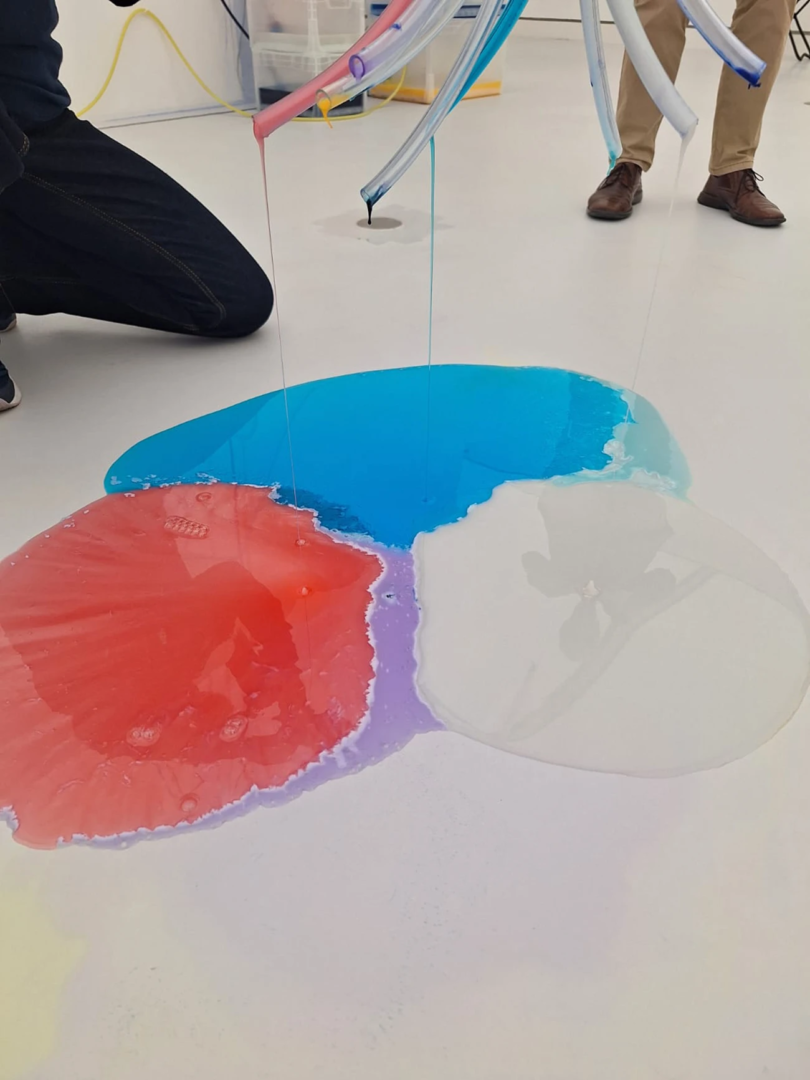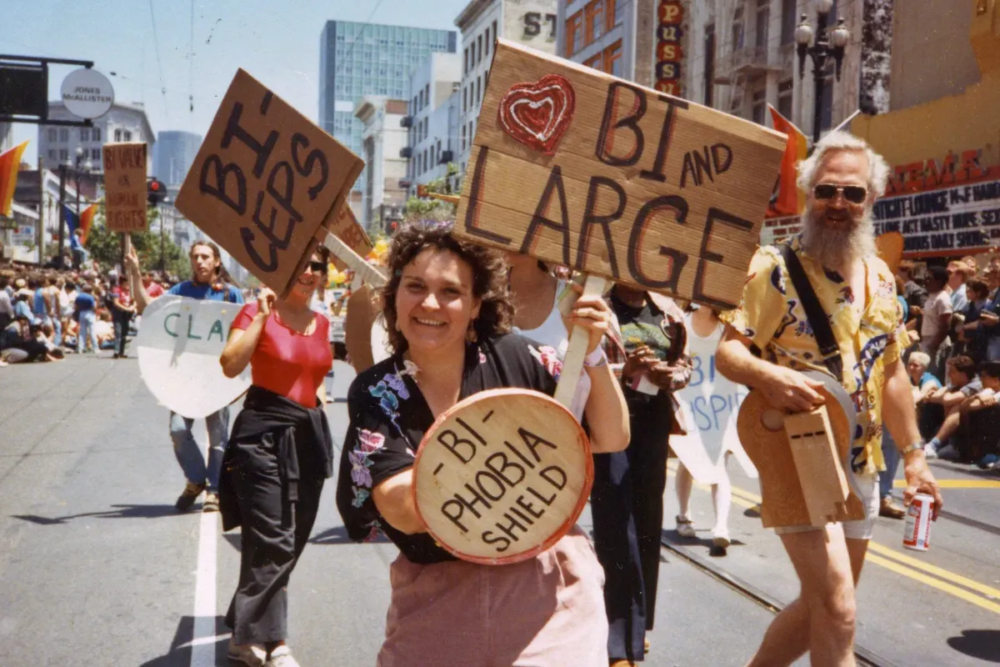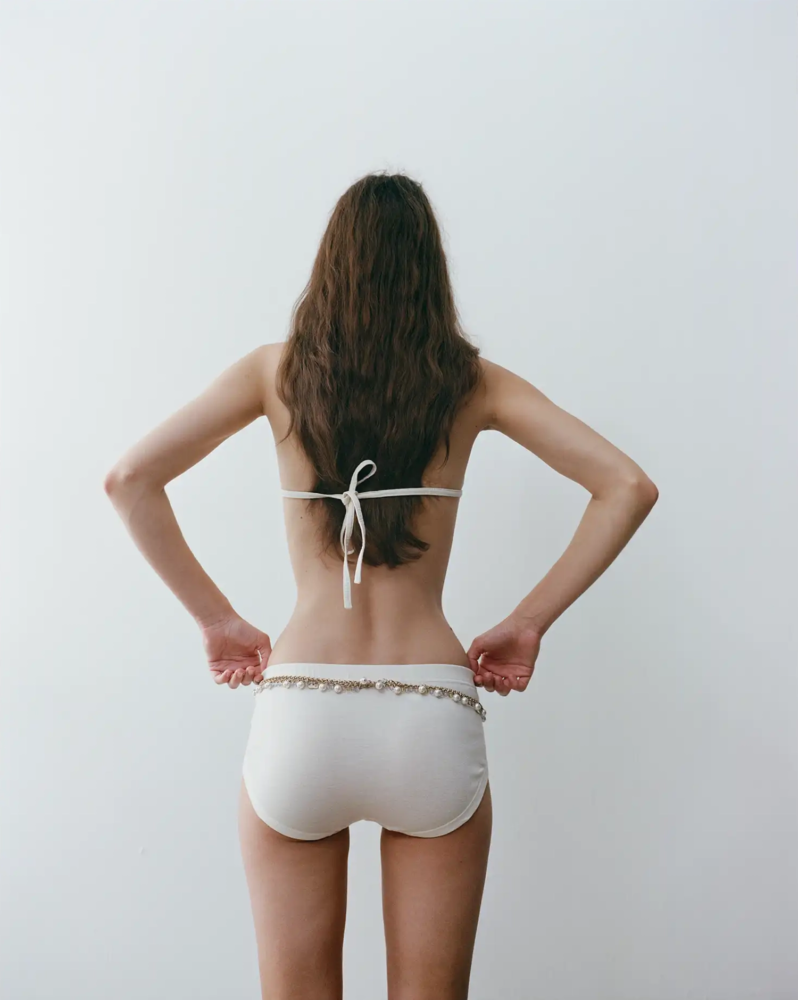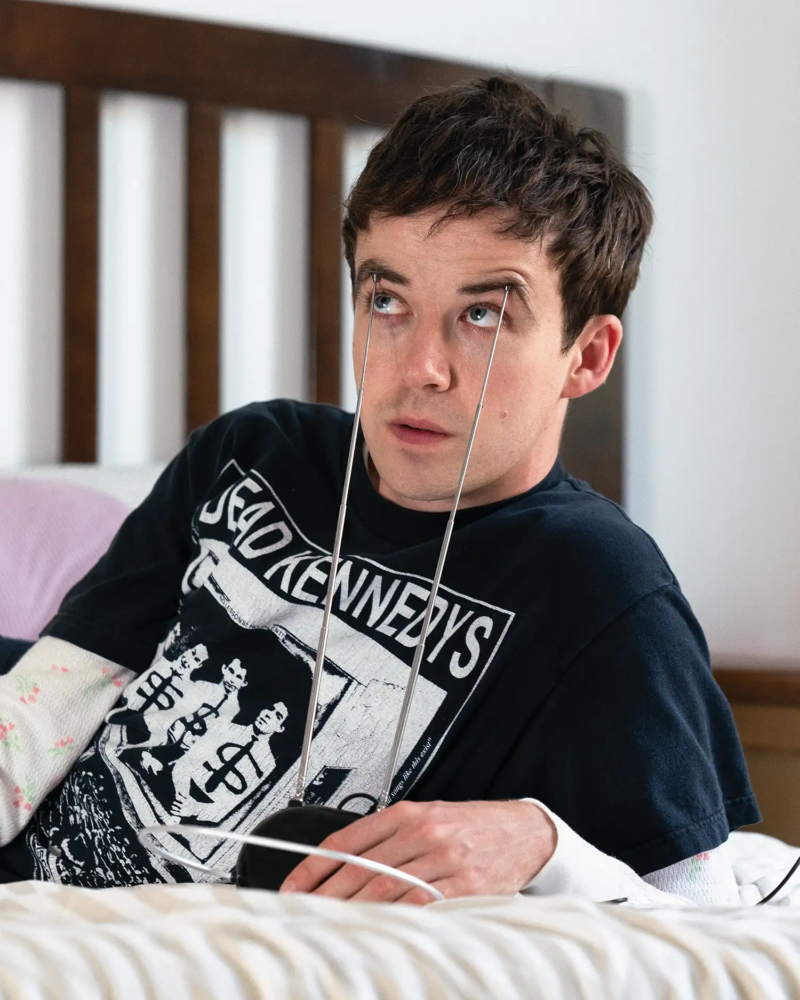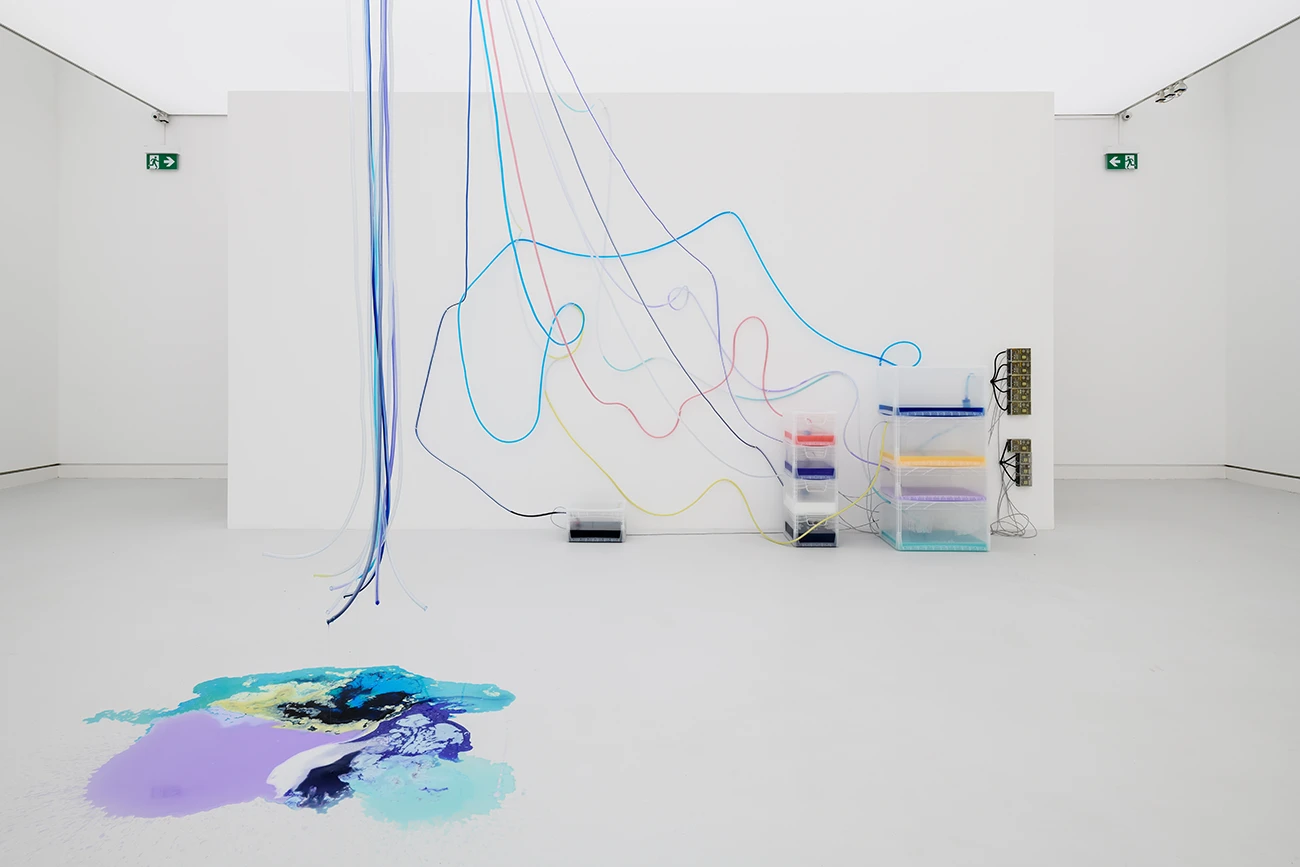
Post-plastic imaginaries: Sarah Schönfeld and the ecological politics of cleansing rituals
Ideas of cleanliness frequently conceal underlying cultural fears: anxieties about control, the illusion of purity, and the unsettling reality of the body as an open, porous system. Schönfeld responds to these tensions
Soap as a political and ecological medium in the work of Sarah Ancelle Schönfeld
In a cultural moment defined by obsessive purification and the relentless erasure of the invisible, German artist Sarah Ancelle Schönfeld reclaims soap — that humble, everyday substance — as a medium of political resistance and ecological reflection. Rather than accepting cleanliness as a neutral act, her work treats it as a loaded gesture, embedded with ideologies of control, social order, and environmental impact.
Schönfeld confronts the cultural narratives that have long rendered microbial life, bodily emissions, and chemical residues as things to be purged. In doing so, she reveals the porous thresholds between body and environment, matter and memory — where acts of cleansing become arenas of both domination and resistance.
Challenging sanitized aesthetics: The invisible ecologies within daily rituals
Schönfeld’s practice consistently investigates the tensions between material transformation and ecological entanglement. Her use of soap, particularly in its liquid form, activates layers of microbial life, scent, and residue that are normally obscured in hyper-sanitized spaces. The act of washing, in her installations, is never merely symbolic: it becomes a critical operation, exposing the residue of chemicals, the afterlife of fragrances, and the unseen agents of degradation or resilience.
What emerges is a confrontation with the underbelly of purity — a concept too often romanticized and too rarely questioned. The invisible ecologies her work uncovers are not just biological but also political: they expose how capitalist structures of cleanliness reinforce barriers between the “clean” and the “unclean,” between acceptable bodies and others deemed toxic or impure.

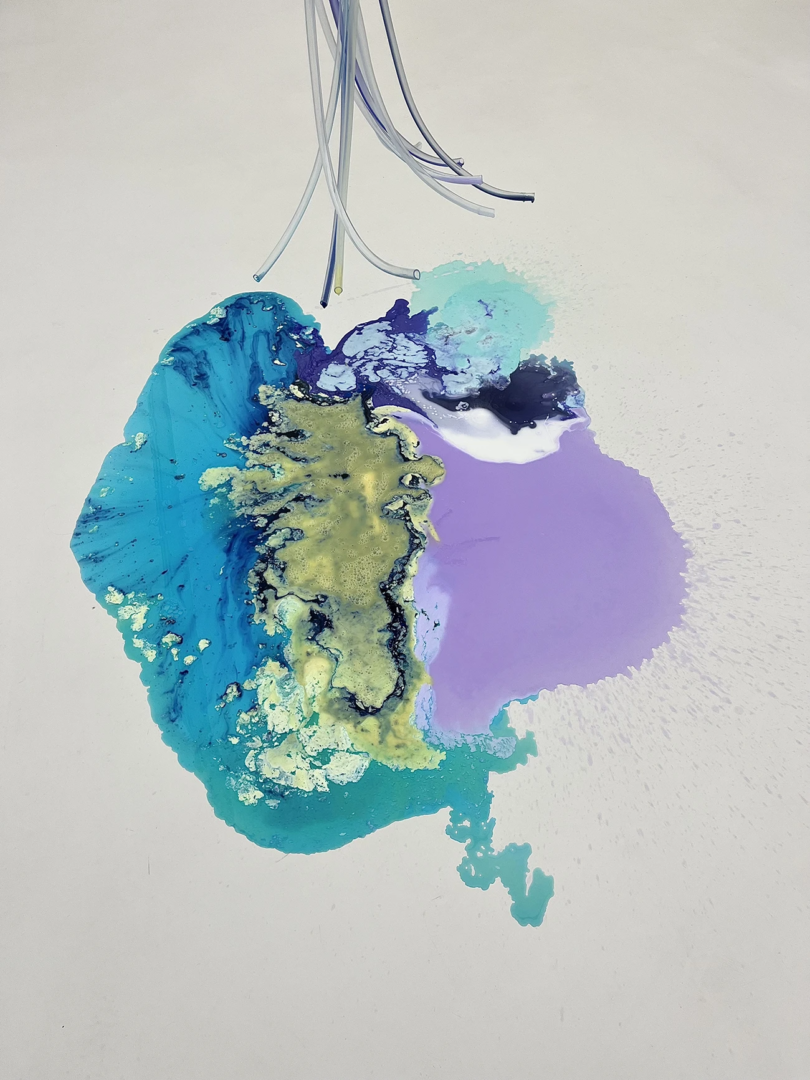
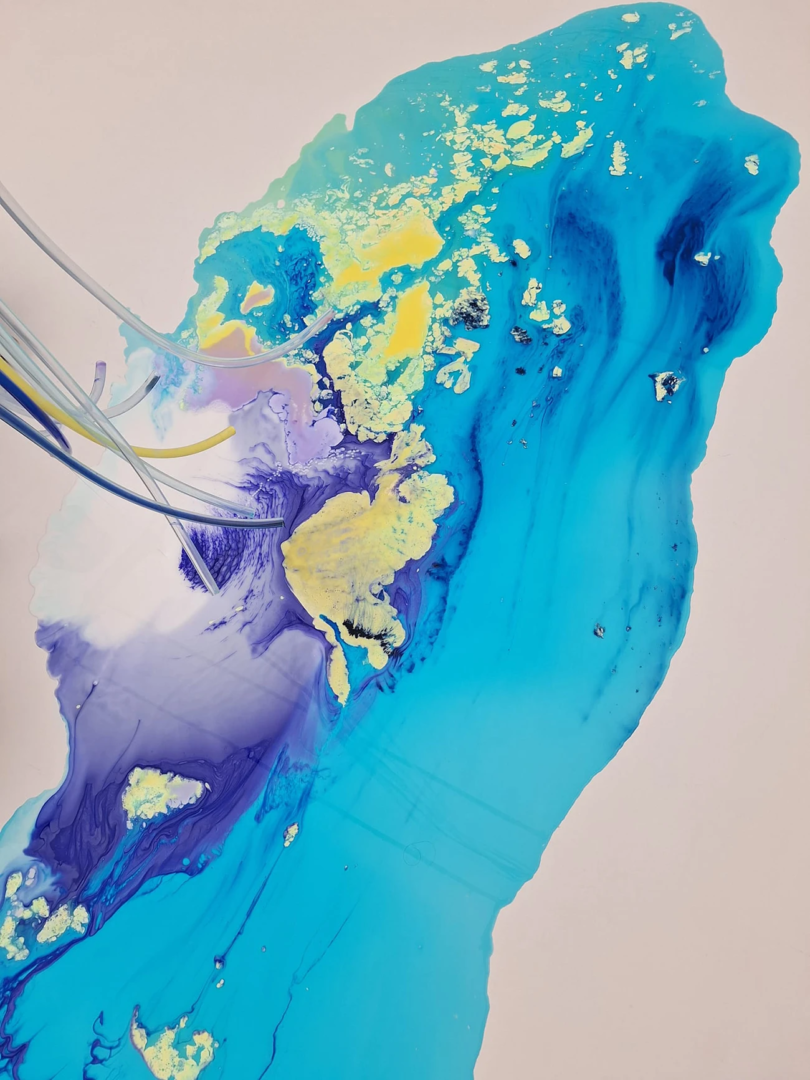
Deconstructing cleanliness: From Barthes to biochemical entanglement
The cultural weight of soap has long extended beyond hygiene. In Soap-powders and Detergents, a seminal essay from Mythologies (1957), Roland Barthes unpacked how commercial soaps symbolized bourgeois ideals of purification and moral order. Schönfeld draws from this semiotic legacy but refuses its binaries. She positions soap as a liminal substance — both cleanser and contaminant — that destabilizes the very mythologies it once upheld.
Her project Detergancy embodies this conceptual tension. Here, soap is not only a functional agent but a metaphorical one, standing in for broader anxieties around environmental degradation, biochemical manipulation, and the commodification of care. Through her installations, Schönfeld urges viewers to confront the contradictions baked into the very products we use to feel “clean.”
The chemical body: Aesthetic research informed by pharmacology and hormones
Before turning to soap, Schönfeld’s research delved into the psychoactive and pharmaceutical substances that shape human experience — from recreational drugs to antidepressants. This background continues to inform her work with liquid detergents. In 2017, with Antibacterial Groundreading, she initiated her first project using liquid soap, exploring its historical and scientific dimensions.
She invokes figures like Friedlieb Ferdinand Runge, a 19th-century chemist and contemporary of Goethe, who investigated both caffeine and synthetic detergents — substances emblematic of modernity’s obsession with speed, alertness, and cleanliness. By revisiting Runge’s experiments, Schönfeld draws a genealogical line between domestic labor, chemical innovation, and aesthetic experience.
Toxic purity: Ecological accountability in the use of artistic materials
Schönfeld acknowledges the ecological contradictions of her medium. Liquid soaps and detergents often contain surfactants, microplastics, and artificial dyes that resist biodegradation and leach into water systems. “I hadn’t fully grasped the urgency of selecting truly eco-friendly materials before,” she admits.
Rather than retreat from this complexity, her work actively inhabits it. Schönfeld explores these contradictions with ethical clarity, refusing to resolve them in favor of artistic purity. This tension — between intent and impact — becomes part of her visual and conceptual language. It challenges both viewers and practitioners to reconsider the materials we label as neutral or harmless.
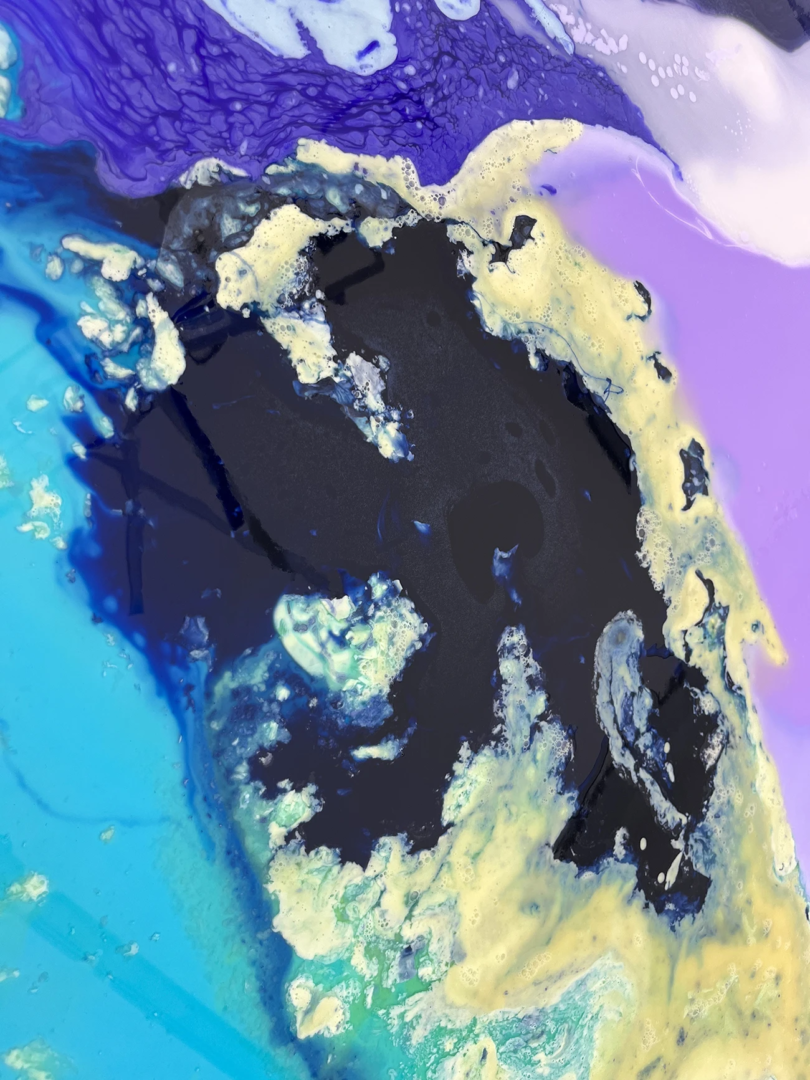
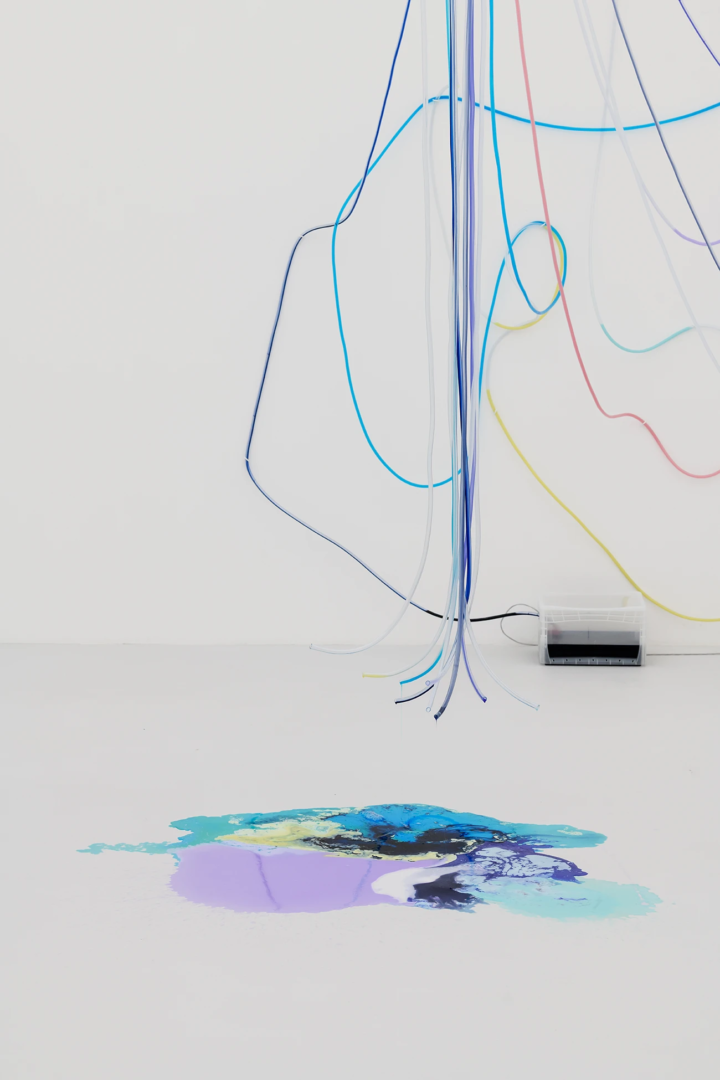
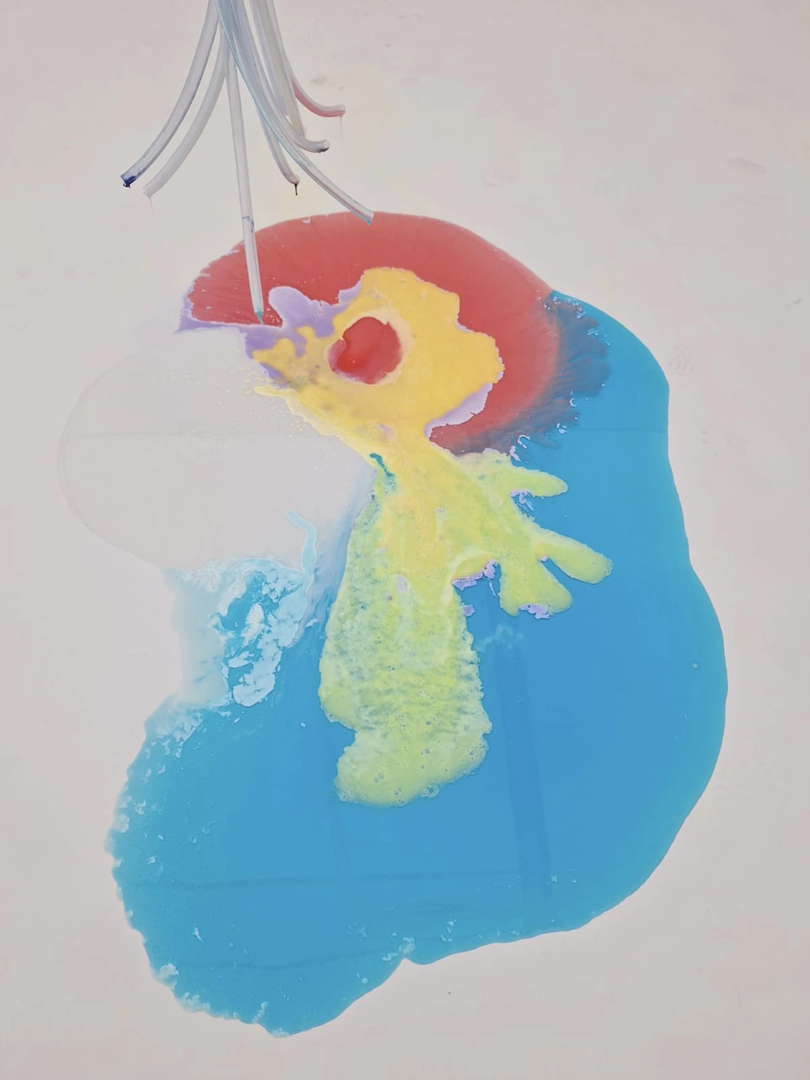
Post-plastic imaginaries: Nature, artificiality, and microbial futures
Informed by breakthroughs such as the discovery of Ideonella sakaiensis — a bacterium capable of metabolizing PET plastic — Schönfeld interrogates the boundaries between the synthetic and the organic. She rejects the binary divide between “natural” and “artificial,” insisting instead on a single, interconnected continuum in which humans, bacteria, and chemicals co-evolve.
This perspective increasingly informs her new body of research into hormonal regulation, neurotransmitters, and dopamine addiction, where she examines how internal biochemistry shapes perception, addiction, and desire. Her work points toward a future in which art engages with science not to illustrate it, but to complicate and humanize it.
Washing as ritual, resistance, and speculative care
Beyond the lab and the gallery, Schönfeld’s art engages with rituals of cleansing as sites of collective imagination. Washing, in her view, is not just an individual habit but a cultural script — one that can be rewritten through gestures of attentiveness, slowness, and ecological consciousness.
Her installations are often durational, immersive, and tactile. They ask: Can cleansing become a form of care rather than control? Can the sensory dimensions of touch, lather, and scent serve as portals into deeper ecological awareness, rather than masking it?
Reclaiming the power of material intimacy in the art world
Schönfeld’s position within the art system is one of ambivalence. “I wonder if the art world is truly invested in supporting healing through art,” she says, questioning the capacity of contemporary art to foster more than aesthetic critique. Her work resists commodification, instead cultivating a kind of radical intimacy — between materials, bodies, and environments — that defies easy exhibition formats.
Her use of soap, both as medium and metaphor, offers a speculative framework for reconsidering how we touch, clean, and relate to the world around us. It is not about proposing new rules of ecological purity but about opening up space for reflection, vulnerability, and entanglement.
Federico Jonathan Cusin
